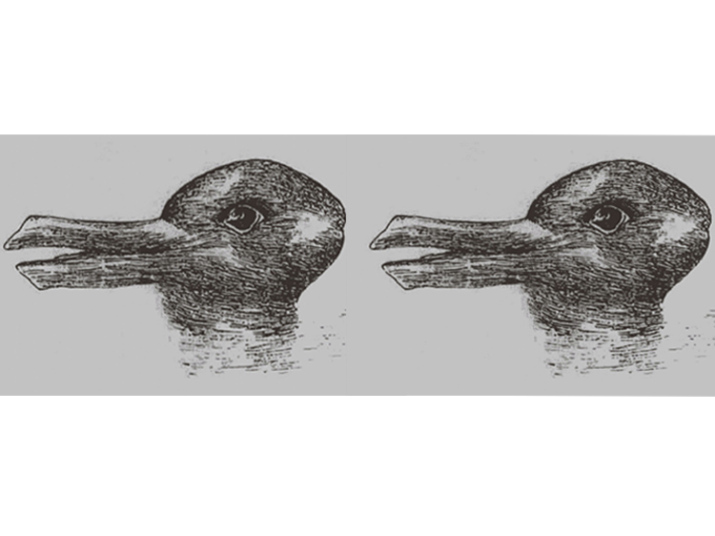If this duck and rabbit optical illusion looks oddly familiar, it’s probably because the original photo has been known for long time, to be exact, as of the 19th century.
Believe it or not, it was first published in 1892 by Joseph Jastrow, an artist.
The mysterious photo of one duck or rabbit has been leaving people scratching their heads for years and years.
The interesting thing about this amazing optical illusion is that different individuals will see different things, that is, a rabbit or a duck.
So, it doesn’t come as a total surprise that this optical illusion has often been used to give an example of 2 different ways to see one thing.
And, to make things even more exciting, one neuroscientists recently took the illusion one step further-he wanted to discover why people would see if they looked at 2 copies of the same image, side by side.
Which Animals Did You See? Let’s Find Out what this Means

If you saw 2 rabbits or 2 ducks, you’re not the only one.
According to a new study on this image, published in the Perception journal, Kyle Mathewson, a neuroscientist discovered that only around 50 percent of the people couldn’t see both a duck and a rabbit at the first glance.
Moreover, when he asked the participants to try and imagine a duck next to a rabbit, they were still unable to see it.
But, when he prompted them to think of a duck eating a rabbit, they could see it. Try it yourself and see if it works for you!
Odd, isn’t it?
As weird as this scenario seems (we’ve never heard of a duck eating a rabbit!), there is a wonderful theory behind the possible reason why this optical illusion may happen and why it ceases when we’re given a certain cue.
According to Mathewson, this happens because our brain tends to zoom out and becomes unable to see the bigger picture when the images are put in context together.
He further added that we should come up with a certain way to decipher the scene and thus, give our brains an opportunity to differentiate between 2 alternatives.
Another proof that looking at the big picture matters; don’t you agree?!
Sources:
